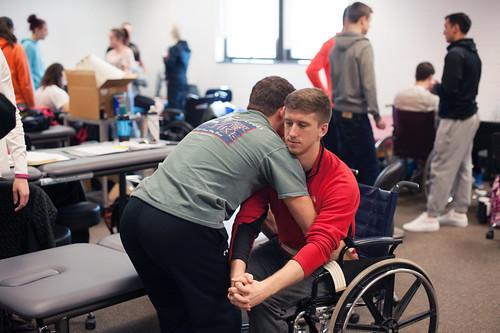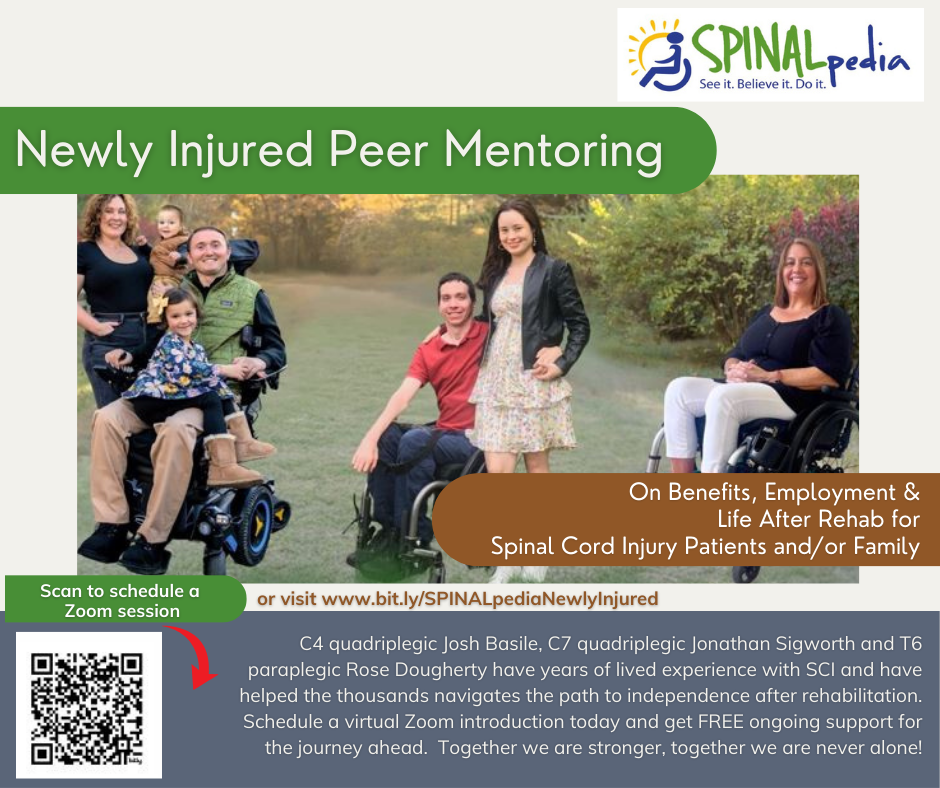There are approximately 300,000 people living with a spinal cord injury in the U.S. right now. Many of these injuries are caused by motor vehicle accidents, sports, falls, violence, and diving. Additionally, more men than women are living with paralysis: 80% of those with paralysis are men.
How the spinal cord works is a mystery to the average person. Most do not realize the spinal cord is encased under 33 vertebrae, and when damage is sustained to the spinal cord, it can be permanent. A bruise, a tear, or any other injury to the spinal cord can result in permanent paralysis. Since the spinal cord is the communicator from the brain to the rest of the body, delivering sensation and mobility, a spinal cord injury can be catastrophic.
Think of a spinal cord injury as a downed power line. The signals going from the brain to the rest of the body cannot flow in their usual way when a spinal cord injury occurs. The higher the injury is on the spinal cord, the more severe the injury becomes. In addition, if a spinal cord is completely torn in half, this is called a “complete” injury. An “incomplete” injury is when the spinal cord is not completely torn and if any sensation or mobility returns below the site of injury.
How Does a Spinal Cord Injury Affect the Body?
Being unable to walk is not the only major side effect of having a spinal cord injury. Many people are unable to control their bowel and bladder ability, and their sexual function is typically affected. Men with spinal cord injuries can still father children, but they will need additional help; sometimes, fertility specialists are needed.
Additionally, some people with spinal cord injuries experience chronic pain after their injury. Fortunately, many rehabilitation centers offer different therapy options to assist with chronic pain including medication, therapy, and alternative therapies like acupuncture.
Not every spinal cord injury is permanent, but most are. The level and severity of damage to the spinal cord determines whether an injury is permanent or not. The spinal column is divided into four different sections – Cervical, Thoracic, Lumbar and Sacral – with the Cervical area at the top of the spinal column. Damage to the Cervical area is the most severe. Those who injure their spinal cord at the base of their head, or the top of the spinal column, will have the most severe paralysis. One’s breathing can be affected, as well.
How Long Will You Be in the Hospital?
The average hospital stay after sustaining a spinal cord injury has dramatically decreased over the last 40 years. During the acute (or initial) phase, the average length of stay is 11 days—this average was approximately 24 days in the 1970s. The average length of time spent in rehabilitation is 31 days, whereas in the 1970s, the average rehab stay was 98 days. Improvements to healthcare and changes in insurance are some of the reasons why these averages have changed.
Alternative Therapies or Clinical Trials

https://www.flickr.com/photos/uhartford_enhp/25048598179/sizes/m/
Many people want additional therapy and rehabilitation after being discharged, since there is a significant amount of evidence that proves the spinal cord takes longer to heal than the time allotted by insurance. NextSteps is one gym that offers outpatient therapy to people with catastrophic injuries. Unfortunately, most insurance plans do not cover any additional therapies post-discharge. Some in-home PT and OT, however, are covered during the first year post-injury. We recommend fundraising to pay for any additional therapies needed.
To regain function (through stem cell trials, epidural stimulation) and to see what else is available (bladder studies, exoskeleton studies, etc), there are dozens of spinal cord injury clinical trials happening right here in the U.S. To search these trials, check your eligibility, and apply, visit CenterWatch: https://www.centerwatch.com/clinical-trials/listings/condition/793/spinal-cord-injuries/
Do you need knowledgeable community support for yourself or a loved one who is in the hospital or just returned home with a spinal cord injury? Our team of peer mentors can help you navigate the resources available to you as well as avoid common pitfalls around fundraising and disability benefits. C4-5 quadriplegic Josh Basile, C7 quadriplegic Jonathan Sigworth, and T6 Paraplegic Rose Dougherty have years of lived experience with SCI and have helped thousands navigate the path to independence during and after rehabilitation. Schedule a FREE video call today by clicking on the following link: https://bit.ly/SPINALpediaNewlyInjured










